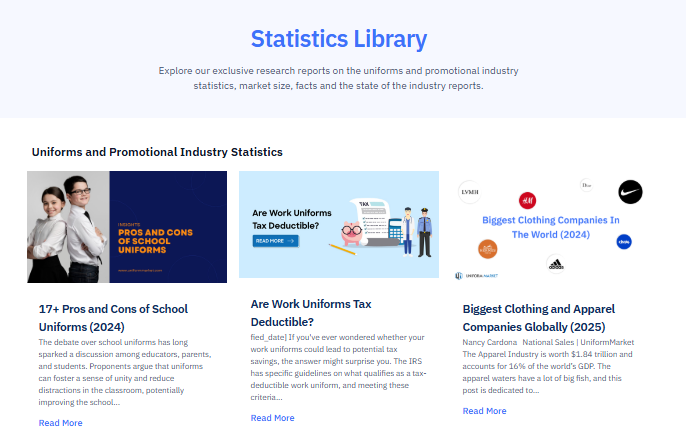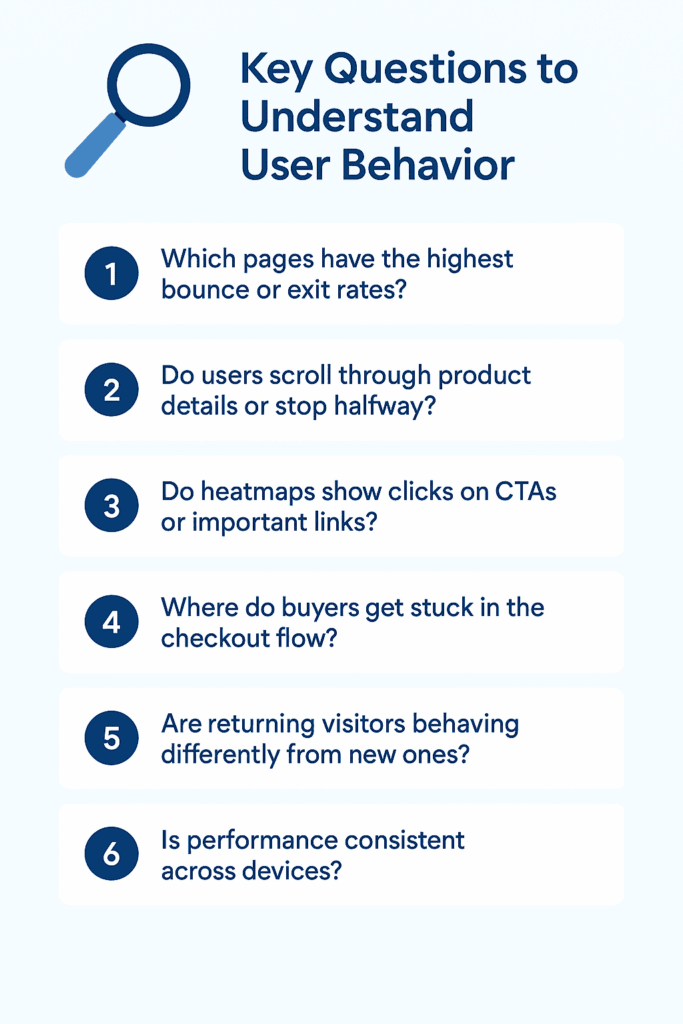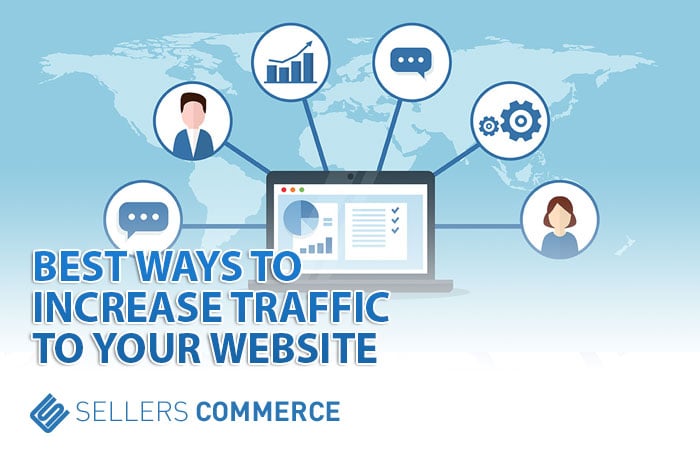It’s 2025, and marketing has changed more in the last two years than in the previous decade. AI is everywhere. Attention spans are shorter. Content is being generated faster than ever.
But some things remain the same. You still need customers to find your website. You still need their attention. And now you also need to show up in AI search results and overviews.
In this guide, we’ll walk through 12 clear and practical ways to bring more traffic to your site. From humans. And from bots.
1. Start With Content Marketing
AI content generation tools have made producing content in various formats easier and faster than ever. But with that comes the risk of content saturation and everything sounding the same. To cut through the noise, your brand needs a clear voice, fresh perspectives, and an understanding of your audience.
Instead of simply repeating what already exists, focus on sharing your own opinions, insights, and observations. Add original research, customer stories, or niche-specific commentary to make your content more valuable and more difficult to copy (this also helps you get more backlinks).
For example, UniformMarket has a statistics library where we add industry-specific research and data. Resources like this build credibility and attract backlinks from industry blogs.

Also, don’t limit yourself to one format. Here are some other formats you should try out:
- Pair long-form guides with short updates and quick reads. These can help answer specific product questions or highlight seasonal offers.
- Add infographics to explain complex topics like sizing charts, shipping policies, or how your materials compare to competitors.
- Create videos or how-to resources for visual learners. Show how your product works, how it fits, or how to care for it.
- Experiment with short-form videos. These work well on Instagram Reels, YouTube Shorts, or TikTok, especially for product demos or unboxings.
- Turn your blogs into LinkedIn carousels for professional audiences. This can be especially effective if you’re selling to businesses or uniforms to institutions.
Content variety helps you reach different types of buyers and gives search engines more signals to rank you.
If you’re in e-commerce or the uniform industry, rotate between blog posts, product explainers, buying guides, comparison pieces, and customer case studies. This mix keeps your content fresh and creates multiple sources of traffic across search, social, and email.
2. Optimize Your Content for SEO

People have been trying to kill SEO for years. They still haven’t succeeded. Despite major algorithm changes, AI overviews, content saturation, chatbots, and no-click searches, SEO optimized landing pages and blog content remain some of the best ways to drive consistent traffic.
And before you ask, the expert consensus is that the trending AI Engine Optimization (or AEO) “hacks” are just good SEO practices.
Anyway, the key to good SEO is to go deep, not wide. Focus on the middle and bottom of the funnel keywords and queries because they are deeply relevant to your product and niche, like comparison keywords, alternatives, etc.
But this doesn’t mean you should avoid top-of-the-funnel topics. The trick is moderation. A good content strategy includes ToFu content too, as long as it offers original thinking and practical insights.
AI overviews and chatbots still depend on published content. If you want to be part of the answers, you need to be the source. Here are some ways to become the source:
- Publish original studies
- Coin new frameworks
- Offer contrarian viewpoints
- Spot emerging trends in your industry early
- Use clever analogies to explain complex ideas (and try to make them catch on)
To support all of this, get your basics right. Write clear title tags and meta descriptions. Add alt text to images. Craft headlines that are specific, benefit-focused, and genuinely helpful.
Use internal links to guide customers deeper into your site, and create a clear content hierarchy. Use ranch style SEO or skyscraper, but weave it into your strategy. SEO still works. But now, more than ever, your content needs clarity, depth, and originality.
3. Use Schema Markup
Adding structured data like schema helps search engines and AI crawlers understand your content more clearly. While it may not drive traffic directly, it can unlock rich results like star ratings, product info, or FAQ dropdowns, which make your listing stand out and improve click-through rates.
Schema can also increase your chances of being mentioned in LLM-generated answers and AI Overviews.
If you run an e-commerce store, product schema can help show price and availability directly in the search results. And if you publish helpful guides, adding FAQ schema can give your content more real estate on the results page.
Here are some practical tips for implementing schema markup:
- Go to schema.org and identify which schema types match your page (Product, FAQ, Article, etc.)
- Use Google’s Rich Results Test to check if your page qualifies for rich features (remember that the rich results test tool only verifies the eligibility of structured data for rich results, and is not a guarantee that they will appear).
- Use Schema Markup Validator to make sure your code is correctly implemented.
- On WordPress, use plugins like RankMath or Yoast to add schema easily.
- On Shopify, use JSON-LD for SEO. You can either add it manually or choose a theme that includes structured data by default.
- After publishing, check Google Search Console under “Enhancements” to monitor how Google is reading your schema.
4. Make Sure Your Site Is Fast and Mobile-Friendly
No one waits around for a slow or clunky site anymore. If your pages take forever to load or don’t work well on mobile, visitors will bounce before they read a single word.
Speed and responsiveness are basic expectations now. Your site should load quickly, feel smooth across all devices, and display correctly on everything from desktops to smartphones. That means optimizing image sizes, cleaning up your page structure, and keeping third-party scripts in check.
This also ties into technical SEO. Users and, therefore, Google care about performance. A fast, mobile-friendly site not only improves user experience but can also help you rank higher in search results.
Make sure your site works well before you worry about driving more people to it. Check your page performance and speed using tools like Google PageSpeed Insights or Pingdom. No amount of traffic will help if visitors leave the moment they land.
Here are some practical tips to improve your site speed and responsiveness:
- Use Google PageSpeed Insights to identify performance issues (even a 1-second reduction in load time can decrease bounce rates by nearly 12%).
- Compress large images and enable lazy loading.
- Minimize unused JavaScript and third-party scripts (this also makes your site more accessible to LLM bots).
- Use responsive layouts that work across all screen sizes, as mobile commerce is expected to drive 78% of the global e-commerce traffic.
- Test your site’s mobile experience by simulating different devices in Chrome DevTools’s device mode.
5. Be Active Where Your Audience Actually Spends Time

Attention spans are shorter than ever, and search behavior is always changing. If you want to drive traffic, you have to meet your audience where they already are. For most brands today, that means social platforms like Reddit, Instagram, LinkedIn, Facebook, X (formerly Twitter), Pinterest, Etsy, and others.
It is not enough to simply publish content on your site and hope people find it. You have to distribute it across the right channels and in formats native to each platform. For e-commerce brands or small businesses, social media also acts as a discovery and shopping destination.
Here are some platforms and what works well on them:
- Instagram works extremely well for discovery and influencing purchasing decisions, with over 70% of users admitting to having bought something from the fashion and beauty industry after seeing it on Instagram.
- LinkedIn is great for insights and thought leadership pieces, especially in the B2B industry.
- X is ideal for quick takes, candid discussions, complaints, and comparisons of products and platforms.
- YouTube works well for tutorials and product walkthroughs.
- 55% of Pinterest users use the platform for shopping. Since pins have a long shelf life, your e-commerce content can keep bringing in clicks months after publishing.
- Etsy can be a great discovery channel. You can share product collections and aesthetic shoots and drive traffic back to your store.
But posting content alone is not enough. You also need to participate in and join conversations, respond to comments, and use relevant hashtags. Remember, social media is a conversation space.
And if you show up consistently with something valuable, relatable, or funny (depending on your brand persona), your audience will notice.
And there is one more reason to diversify your presence. LLMs and AI tools cite content from social platforms as well. The more places your brand shows up, the more chances it has of being referenced by them.
6. Create a Community
If you don’t want to depend on social media and Google algorithms, building a community is one of the smartest things you can do.
For e-commerce brands, this can mean creating a space where buyers share tips, reviews, and real-life use cases. Whether you’re selling uniforms or handmade goods, a good community makes your product feel more approachable.
You can use platforms like Circle, Heartbeat, or even a simple Slack or WhatsApp group to get started.
If you already have an email list, that can be the foundation of your community.
Here are some ideas to build and nurture your community:
- Invite buyers to join after checkout or in thank-you emails
- Run small product discussions or Q&A sessions
- Ask members to share product photos or reviews
- Feature helpful posts or comments in your newsletter
- Keep the space welcoming with basic guidelines
Set clear guidelines and keep the space well-moderated. A good community should feel open but intentional and inclusive as well.
Note: Not every e-commerce business needs a community. But for high-margin, repeatable, or niche products, it’s one of the most cost-effective retention + branding tools in 2025. The returns may not be instant, but they’re compounding.
7. Don’t Neglect Email Marketing

The inbox is one of the most personal digital spaces your audience has. And unlike social feeds or search results, you need permission to show up there. This is why you should never purchase email lists.
That’s a big deal. It also means you can’t take that access for granted. Your emails should offer real value. Not just catchy subject lines or clickbait offers, but actual, useful updates, product news, or content they want to read. A well-timed newsletter or campaign can bring in repeat buyers to your website.
Here are a few tips to strengthen your email strategy for e-commerce:
- Segment your list by behavior or purchase history and send updates that match where the customer is. This could be reorder reminders, personalized product picks, or helpful tips
- Share updates that link back to your site, like new product launches, buying guides, or blog content
- Use tools like Mailchimp, Kit, Brevo, or Klaviyo to send timely emails like back-in-stock alerts, abandoned cart nudges, or loyalty rewards
Make sure you’re being transparent. Use clear language, follow basic email compliance like GDPR and CAN-SPAM, and give people a way to manage preferences or opt-out.
Remember that the goal is to build a list of buyers who trust you enough to keep coming back to your website.
8. Consider Guest Blogging
Guest blogging still works. But only if you do it right. Don’t pitch generic posts or write something forgettable just to get a link. That kind of guest blogging doesn’t help anyone, and it won’t drive meaningful traffic either.
Instead, focus on writing high-quality, genuinely helpful posts for websites that are actually relevant to your niche. Share something thoughtful. Something people will want to read. And don’t treat it like a transaction. Reach out to people and build real relationships. That’s how you get opportunities that matter.
Guest blogging is a two-way street. You can also invite people in your industry to write for your site. If their content is good and they share it with their network, you get exposure, credibility, and maybe a few backlinks too.
9. Submit Your Content to Aggregator Sites and Content Syndication
There are plenty of content aggregators and discovery platforms out there. Sites like Flipboard, Hacker News, and GrowthHackers let you submit useful content for a broader audience. If your post is relevant and well-written, it can bring in steady referral traffic over time.
You can also republish or syndicate some of your content on platforms like Medium or LinkedIn Articles. Just make sure to use a canonical link back to your original post so search engines know which version to prioritize.
10. Be a Thought Leader, and Talk to the Ones Who Already Are
Publishing interviews with industry experts, especially in podcast format, is a solid way to build credibility and bring in traffic. 76% of podcast listeners have responded to podcast advertisements, whether by visiting the website or purchasing the mentioned product.
If you run an e-commerce business, this can work especially well when you share behind-the-scenes stories, lessons, struggles, or market insights your audience can relate to.
But you can’t just rely on other people’s voices. You need to put your own out there, too.
Here’s how you can approach it:
- Post your thoughts, lessons, and ideas on your blog or LinkedIn (75% of B2B executives have explored products or services after engaging with compelling thought leadership content).
- Share what you’re learning and your failures, not just success stories.
- Reach out to people with newsletters, podcasts, or engaged followers and ask if they’d be open to featuring your story or perspective.
- Record a short podcast or interview with a supplier or industry expert.
Remember, the more helpful and honest you are, and the more you get your guests to open up, the more people will pay attention.
11. Examine Your Analytics and User Behavior Data

Tools like Google Search Console, Google Analytics, and Microsoft Clarity can tell you a lot about what’s working and what’s not. You can see which pages are getting the most traffic, where your visitors are coming from, and how they move through your site.
But don’t just stop at traffic numbers. Dig into actual user behavior. Here are a few things to check:
- Which pages have the highest bounce rates or exit rates?
- Are users scrolling through product details or dropping off halfway?
- Do heatmaps show clicks near CTAs or important links?
- Are buyers getting stuck somewhere in the checkout flow?
- Are returning visitors behaving differently from new ones?
- Is there a difference in performance across devices?
Use that data to make small tweaks. Move CTA buttons. Clarify product specs. Reorder content. Your analytics aren’t just for reporting. They’re for learning and adjusting. Check-in often, make small changes, and keep improving based on real user signals.
12. Use Paid Ads
Finally, if you have the budget, paid ads are one of the fastest ways to bring targeted traffic to your site. You can use search ads, social media ads, display ads, programmatic ads, etc. The key is knowing what to use and when.
Start with your goal. If your goal is conversions:
- Use Google Ads with high-intent keywords such as product names or “buy” queries
- Monitor your bids, keyword match types, and quality scores
- Consider product listing ads. They often have better click-through rates than regular text ads
- Make sure your landing pages match the intent of the ad
And, if your goal is awareness or retargeting:
- Try Facebook, Instagram, LinkedIn, or even TikTok
- Target users by interests, behaviors, or job roles
- Use videos, carousels, and product visuals that match the platform vibe
In all cases, make sure your ad copy, visuals, and landing pages are aligned with your goals and brand style. Aim for traffic that actually matters to your business instead of just chasing clicks.
Always run small tests before scaling. Paid ads can drive great results, but only if you track performance and adjust along the way.
Ready to Turn Traffic into Growth?
Driving traffic is just the beginning. What really matters is turning that traffic into loyal customers and long-term business results.
At UniformMarket, powered by SellersCommerce, we help uniform manufacturers, retailers, and businesses simplify how they sell, scale, and serve their customers.
Whether you’re outfitting a team of nurses or managing uniform programs for a national utility company, we’ve got the tech and experience to help.
Want to see how it works? Contact us for a demo, and let’s talk.





